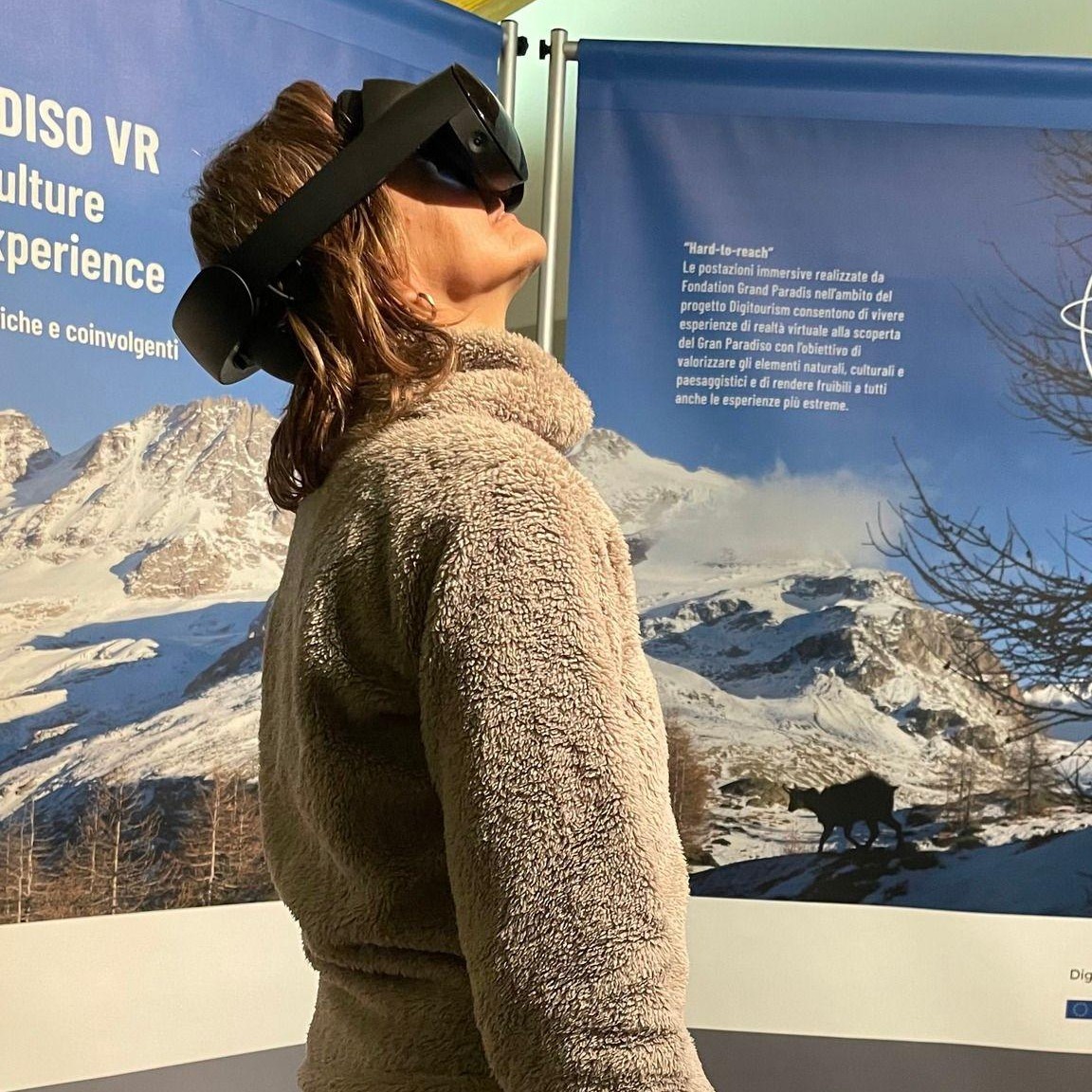
Nature and Culture Immersive Experience
Gran Paradiso VR - Nature and Culture Immersive Experience - Unique and immersive experiences through 360° stories
Many business intelligence surveys demonstrate that Digital Realities (Virtual reality and Augmented reality) are becoming a huge market trend in many sectors, and North America is taking the lead in this emerging domain. Tourism is no exception and the sector in Europe must innovate to get ahead of the curve of this technological revolution, but this innovation needs public support.
In order to provide labs, startups and SMEs willing to take this unique opportunity with the most appropriate support policies, 9 partner organizations from 8 countries (FR, IT, HU, UK, NO, ES, PL, NL) decided to work together: regional and local authorities, development agencies, private non-profit association and universities.
Thanks to their complementary experiences and know-how, they intend to improve policies of the partner regions (structural funds and regional policies), in order to foster a tourist channelled innovation in the Digital Realities sector.
All partners will work together on policy analysis tasks before exchanging their best initiatives and transferring them from one country to another. This strong cooperation will allow them to build the best conditions to foster innovation thanks to more effective structural funds policies and regional policies.
€1,957,698.00
Research and innovation
8 policy instruments are addressed, among which 7 relate to structural funds programmes. Basis for exchange of experience: Reciprocal improvement analysis and 8 study trips with peer-review of each partner’s practices. Video reportages for an effective dissemination towards other territories in Europe.
At least 16 good practices identified. 8 targeted policy instruments improved. At least 27 staff members will transfer new capacities in their intervention fields. At least 8 involved stakeholders with increased skills and knowledge from exchange of experience. Expected 17 appearances in press and media, including at European level.
As mentioned above, the measure concerned is the Axis 1, Investment priority 1.b.
Axis 1: Strengthening research, technological development and innovation
Investment priority 1.b: Development of research and innovation infrastructures, and of capacities to foster excellence in R&I, and promotion of expertise centres
This instrument aims at increasing the number of innovative joint projects in the strategic sectors identified in the RIS3 (which includes culture and tourism), by:
- Supporting joint projects involving research bodies and SMEs
- Enforcing support services to help develop innovative projects
- Encouraging dissemination of knowledge and promoting public private partnerships.
This measure seems well adapted to the needs of the regional economic stakeholders, and would be the perfect tool to support digital realities innovation in the tourist sector. Unfortunately, none of the beneficiaries so far were working on this topic.
We need to find solutions to increase the use of this policy instrument by the tourist research bodies and SMEs, so that the region does not miss the challenging arrival of Digital Realities technologies which will transform completely the sector of tourism on the long term.
The Investment Programme for Growth and Jobs 2014-2020, funded by the Region (15%), the State Rotation Fund (35%) and the ERDF (50%), contributes to the EU strategy for smart, sustainable and inclusive growth.
The axis 1 is dedicated to strengthen research, technological development, innovation and to improve the conditions for R&D by fostering the quality innovation demand and the spread of research activities within the territory of the Aosta Valley, in line with the guidelines of the S3.
The intended result is to increase the percentage of oragizations which carry out R&D activities in collaboration with external subjects from the actual 65% to 67% at the end of the programming period.
The selected investment priority 1.b wants to promote R&I investments of organizations through services and prototypes of innovative solutions to create challenging situations for innovation and a knowledge-based economy.
Action 1.1.3 is focused on supporting projects aiming at promoting innovative solutions in processes, products and organizational formulas, in particular those operating in the local specialization sector, as identified in the S3.
In order to increase the effectiveness of the policy, P2 wants to benefit from new ideas to inspire local organizations to present similar innovative projects in their area, increasing the use of available ERDF funds.
Hungary’s multi-fund operational programme for economic development and innovation supports the country’s least developed regions to improve their economies. The Digitourism project aims to improve the second financing priority of the programme (Priority 2): Research, technological development and innovation. Important objectives of this priority are improvement of R&D activity of knowledge- and technology-intensive companies, development of an advantageous background for innovation, more effective use of knowledge, development of marketable products/technologies and services, as well as increasing number of strategic networks between R&D companies, SMEs and universities.
Another priority of the OP aims at developing the tourism industry and supporting info-communication developments, therefore Digitourism assists the OP by also connecting these 3 thematic fields.
The problem with this Priority 2 is that the calls of the programme are not reflecting to innovation trends such as augmented reality applications, though introducing this possibility would provide an efficient tool for the tourism facilities in improving their marketing, raising income and level of employment. On the other hand research facilities and IT companies could join R&D co-operations, which aim is also defined in the OP.
The scope of Digitourism is also in line with the thematic priorities of the national S3 strategy, and the implementation of S3 is supported by EDIOP.
It looks to develop links and synergies between enterprises, research and development centres and the Higher Education sector, in particular by:
- promoting investment in product and service development, technology transfer, social innovation, eco-innovation, public service applications, demand stimulation, networking, clusters and open innovation through smart specialisation;
-supporting technological and applied research, pilot lines, early product validation actions, advance manufacturing capabilities and first production, in particular in key enabling technologies and diffusion of general purpose technologies.
The Coast to Capital ESIF Strategy sets out localised detail for ERDF as “Intervention Area 1”, highlighting the following need; “Promote SME/HEI/public sector collaborative research and innovation and commercialisation, including collaboration with HEIs and local business research and innovation institutes within and across our five priority sectors and our specialised technology futures”.
In order for product development and take-up to increase, opportunities need to be understood and incentivised. There needs to be more sharing of knowledge and experience between various stakeholders and a greater degree of joined-up policy and practice. This policy needs to include prioritisation of funding opportunities through financial instruments including ESIF and ETC.
Vision: Oppland shall have a sustainable tourism industry with experiences and adventures of high quality ahead of the demand from the market. The tourism industry shall be an important contribution in maintaining viable local communities.
The strategy has two main components:
1) adventures / experiences and development of destinations. The aim is to increase value creation and power of attraction through a focus on experiences / adventures, destination development and further development of second homes.
2) Marketing. The aim is to have at least the same yearly development as the national average in number of overnight stays and value creation.
The latter aim needs to be reframed, as it is overly defensive. Oppland is in the very top nationally when it comes to both overnight stays and value creation, from both the national and the international market. Furthermore, we need to highlight sustainability. This is the overarching aim of Oppland County Authority as a whole. Digitalization also needs to be embedded in the strategy in order to meet future demands. The innovation factor has a high focus in the industry now, and therefore needs to be a part of the policy document.
It intends to promote the investment of companies in innovation and research, to develop linkages and synergies between business actors, research centers and Higher/University education stakeholders. In particular, investment in the development of products and services, technology transfer, social innovation, eco innovation, public service applications, stimulation of demand, networking and promotion of clusters and open innovation through smart specialization; Support of the applied technology research, pilot lines, early validation of products actions and advanced manufacturing capabilities, particularly focused on key enabling technologies (KETs) and general purpose technologies dissemination.
Technology transfer and collaboration among the different stakeholders of the Research and Innovation ecosystem (Universities, Technology centers, companies...) is working reasonably, with accountable and growing indicators. But essentially this transfer is properly done in terms of joint projects, knowledge and resources sharing. Going beyond, via new businesses creation, and its foster and enhance during their whole lifecycle is the necessary next step to be faced and improved.
Sharing knowledge and experiences with other territories will allow taking the best practices in this field in order to avoid unfruitful actions in this improvement goal.
Axis 1 Smart Leadership of Tourism; Improvement of the competitiveness and productivity of the Canarian tourist product;
Specific objective: Innovation for the introduction of new tourism products and the cost-effective consolidation of existing products
Investment priority 1b.
Objectives:
• Promote the orientation of scientific and technical research carried out in research organizations and in business R&D activities, towards the priorities of the RIS3.
• Promote the generation and significant advance of scientific knowledge and research at a level of excellence
• Avoid the fragmentation of research groups, promoting cooperation and coordination between companies, universities and research centers, as well as supporting the participation of Canarian entities in international R&D programs and projects.
Characteristics:
Companies and research centres receive a grant up to 70.000€ per project chosen by international criteria of good practices in the evaluation of Scientific and technical research.
Why should it be improved?
The policy does not include reference technologies. It mentions the RIS3 strategy but does not provide guidelines in order to align the projects with other EU projects or with the technological most interesting trends. Therefore, the policy needs a technological framework.
With this technological framework, all the results would have a clearer meaning and the projects would cope easier with the latest technologies in the RIS3 sectors.
Regional Operational Programme (ROP) is the financial instrument which supports implementation of the Strategy of Development 2020+ as well as Regional Innovation Strategy. ROP consists of 11 priority axes directly related to the regional Strategy of Development 2020 +. 72 % of the structural funds of ROP K-PV come from ERDF, 28 % from ESF.
The support within the chosen policy instrument is dedicated to the projects related to creation of new e-public services as well as improvement of the existing ones. Other actions planned are dedicated to increased access to public information and scientific and cultural resources.
In the region there is a strong need of digitalization of archeological data, as it could be the basis of new cultural and tourist offers. But despite the eligibility of this topic under the target policy, no projects have been submitted so far and the need is not covered.
This may be due to lack of knowledge and good practice which P8 hopes to obtain during the Digitourism project implementation, in order to stimulate project applications.
Tourist & cultural companies need this data to build new products, in particular those based on Digital Realities, and the difficult access to the data makes innovation in this field extremely difficult. It is consequently crucial to find solutions to help the data owners to make it available to the public and more importantly to the stakeholders of the tourist sector which is a very important economic sector in the region.

Gran Paradiso VR - Nature and Culture Immersive Experience - Unique and immersive experiences through 360° stories
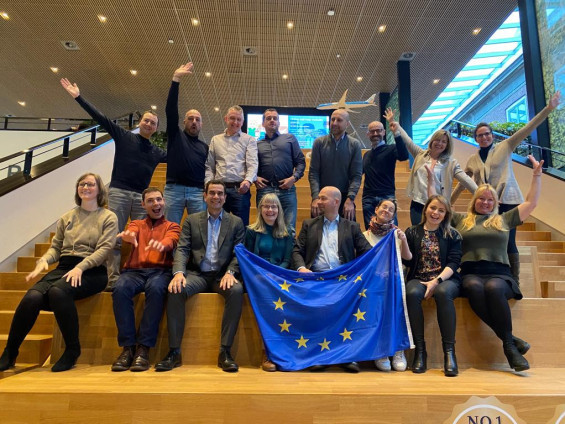
Climbing in Gran Paradiso in virtual reality: digital solutions of the Digitourism project previewed at Breda University
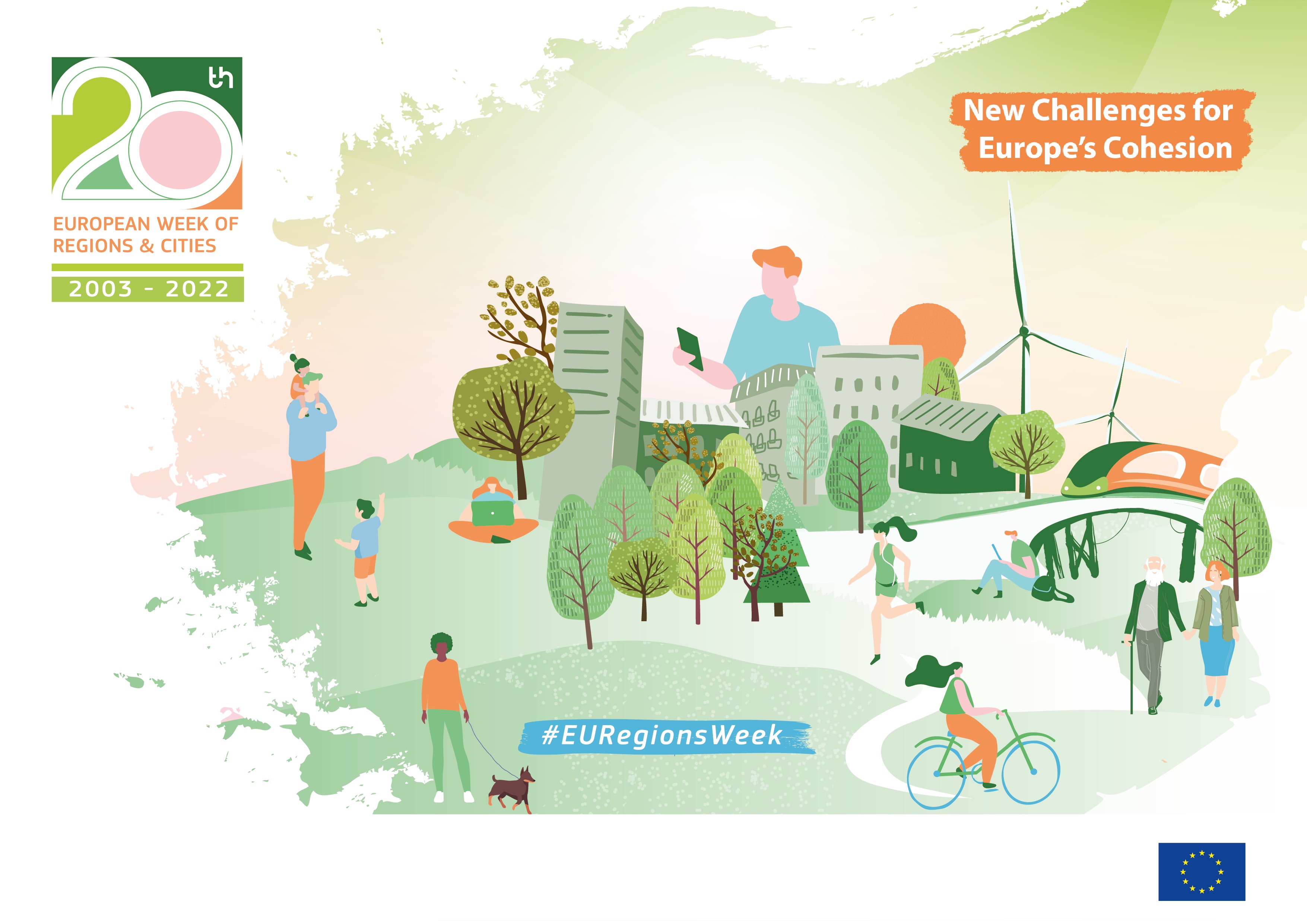
Registration is now open to attend the Digitourism online workshop "Digital realities in tourism" held on October 13, 2022.
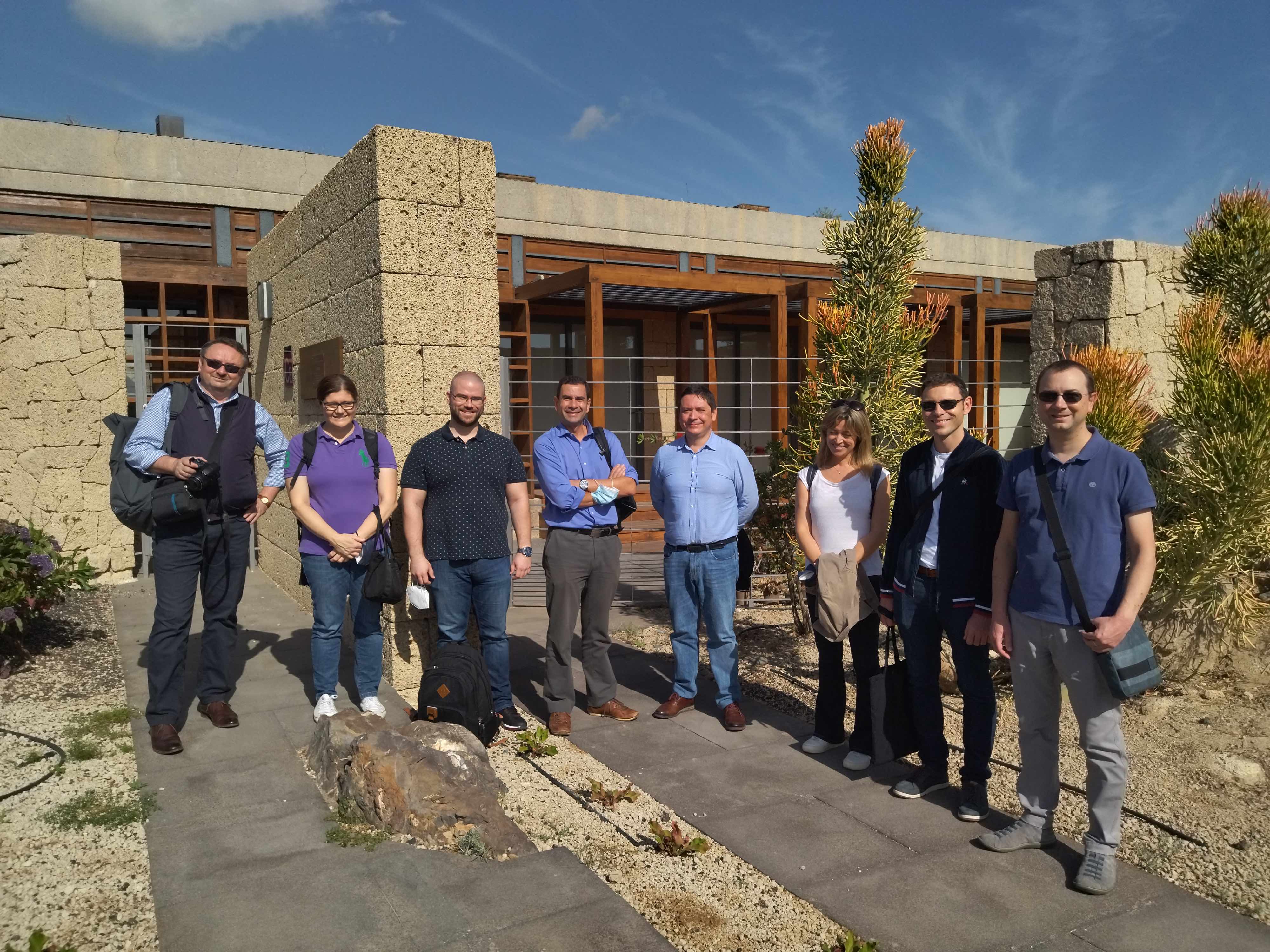
Partners from France, Hungary and Italy took part in the SV in Tenerife, Canary Islands, Spain, organized by Innovalia Association on December 13-16, 2021.
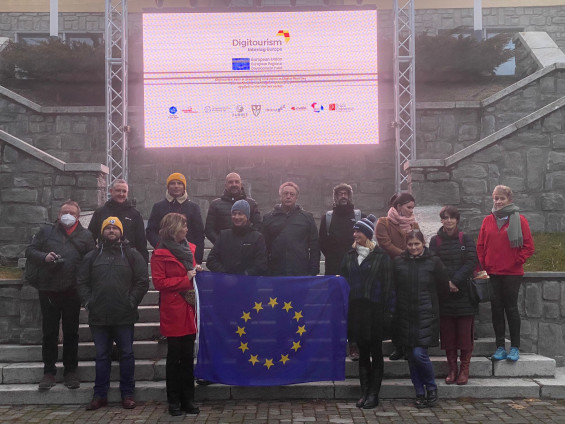
13 partners from France, Hungary, United Kingdom, Spain, and Norway took part in the Study Visit in Grand Paradis, Aosta Valley, Italy.
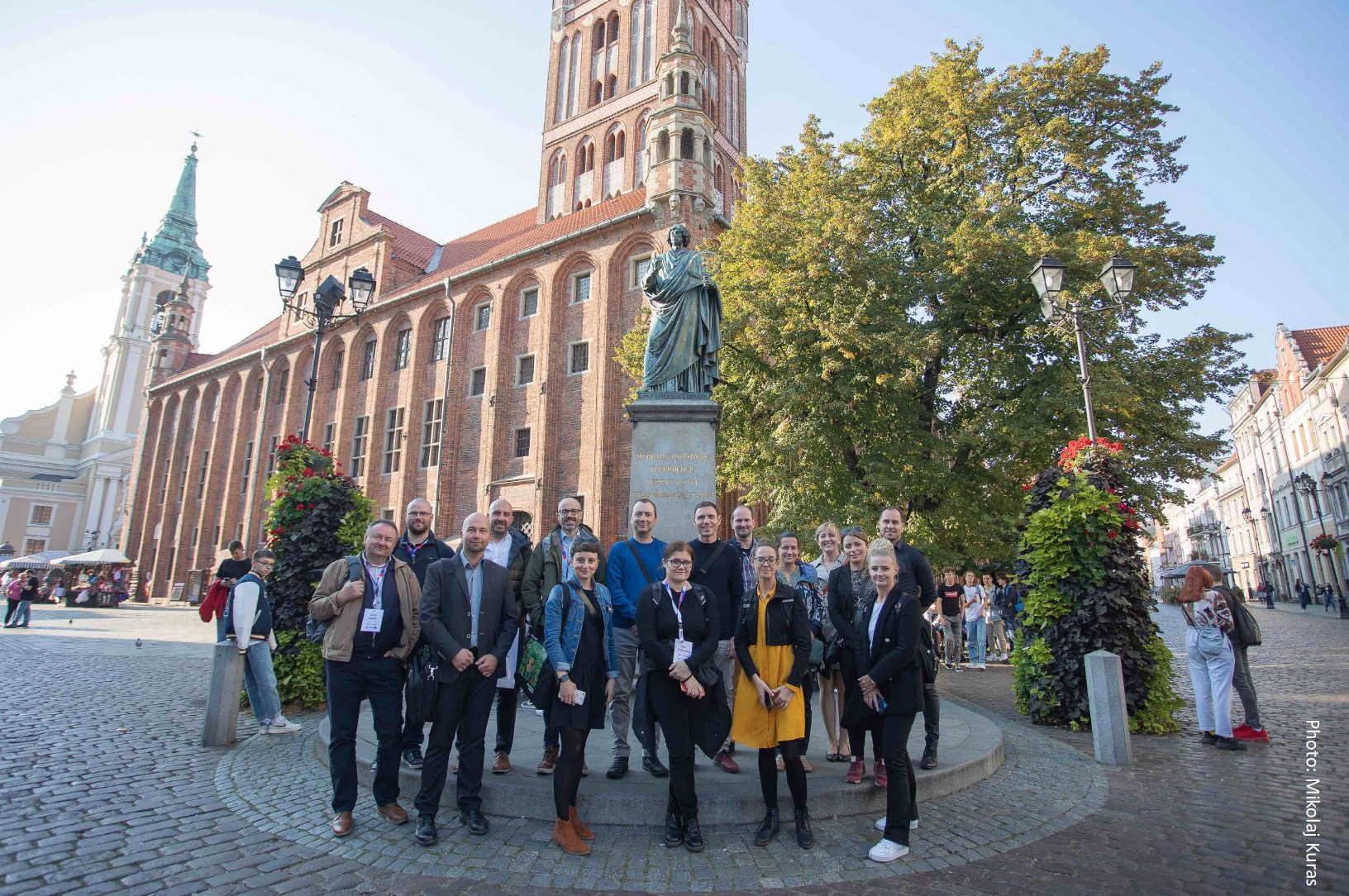
Digitourism partners, visited Kujawsko-Pomorskie Voivodeship (KPV) from Oct. 4 to 6 to learn how KPV uses modern technologies in tourism promotion.

On May 4-5, Study visit to Gran Paradiso in Aosta Valley, Italy, took place.
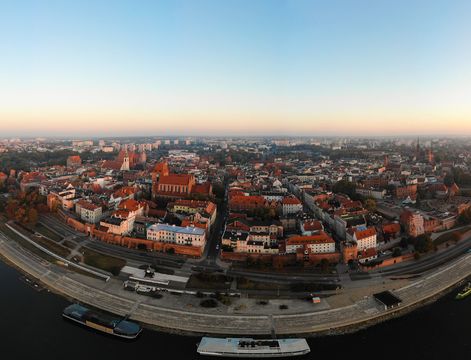
The online Study Visit to the Kuwjawsko – Pomorskie region took place on April 21 and 22, 2021

Partners and stakeholders will have the opportunity to learn how digital realities are being developed, promoted and implemented in Canary Island.
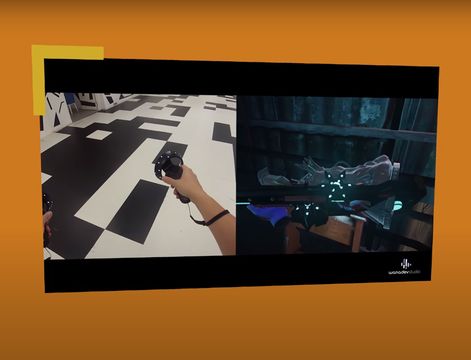
Watch the first video reportage of the Interreg Europe Digitourism project on "AR and VR games and edutainment sector".